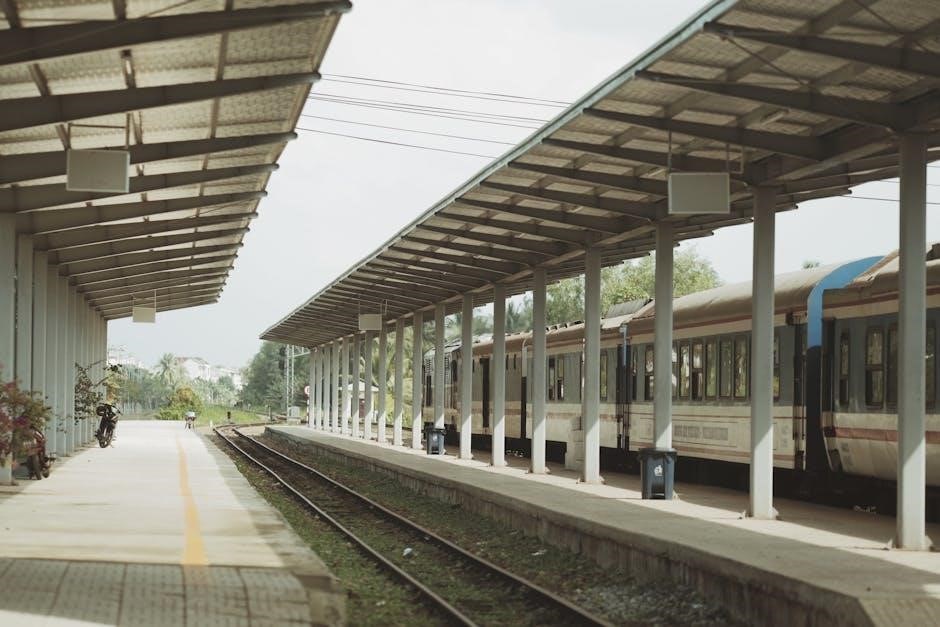The terms guide rail and guard rail are often used interchangeably, referring to a system designed to keep people or vehicles from straying, with guide rail being a term created for legal reasons, typically.
Difference in Terminology
The difference in terminology between guide rail and guard rail is often a matter of legal distinction, with guide rail being used to avoid implications of absolute protection, instead emphasizing redirection.
This subtle distinction is crucial in the context of liability and accident litigation, where the terminology used can significantly impact the outcome of cases, as seen in the numerous lawsuits involving guardrail accidents.
Furthermore, the term guide rail is also used in various other contexts, such as stairs, pedestrian belts, and electric trains, to refer to a secondary rail that provides additional support or guidance, highlighting the complexity of the terminology.
Understanding the difference in terminology is essential to navigating the nuances of guide rail and guard rail systems, and to appreciating the importance of precise language in the context of safety features and legal liability, as discussed in various online forums and resources.
Definition and Purpose
A guide rail or guard rail is a system designed to keep people or vehicles from straying, typically by providing a physical barrier or redirecting them back on course, with the primary purpose of enhancing safety and preventing accidents.
The definition of a guide rail or guard rail encompasses a range of structures, including metal beams, concrete barriers, and cable systems, all aimed at mitigating the risk of injury or damage in various settings, such as roads, stairs, and pedestrian areas.
The purpose of these systems is to provide a protective barrier that can absorb or redirect the impact of a vehicle or person, reducing the likelihood of severe injury or damage, and to guide them back to a safe path, thereby minimizing the risk of accidents and ensuring a safe environment.
By serving as a protective barrier, guide rails and guard rails play a critical role in preventing accidents and saving lives, making them an essential component of safety infrastructure in various contexts, as evident from online discussions and resources.

Design and Functionality
Guide rails and guard rails are designed with functionality in mind, typically featuring metal or concrete structures, to effectively redirect vehicles or people, using internet resources for optimal design and safety features always.
Types of Rails and Their Uses
There are various types of rails, including handrails, guardrails, and rubrails, each serving a specific purpose. Handrails are typically used for elevation changes, such as stairs, while guardrails are used in situations where there are drops greater than 30 inches. Rubrails, on the other hand, serve as barriers between pedestrians and roadways. According to internet resources, these rails can be made of different materials, including metal and concrete, and are designed to provide safety and guidance; The use of these rails is crucial in preventing accidents and ensuring the well-being of individuals. Furthermore, the design and installation of these rails must comply with specific guidelines and regulations, such as those set by the American Society of Civil Engineers. By understanding the different types of rails and their uses, individuals can better appreciate the importance of safety features in various settings, including buildings, roads, and public spaces, and take necessary precautions to ensure their safety. Additionally, the proper use of rails can help prevent injuries and fatalities, making them a vital component of safety measures. Overall, the various types of rails play a critical role in maintaining safety and preventing accidents.
Load Capacity and Strength Requirements

The load capacity and strength requirements of guide rails and guard rails are critical factors in ensuring their effectiveness. According to the International Building Code (IBC) guidelines, top guardrails and handrails must be able to withstand a linear load of 50 pounds per linear foot. They must also be able to handle a 200-pound concentrated load applied downward within two inches of the top edge of the top rail. These requirements are designed to ensure that the rails can withstand various types of loads and stresses, including those caused by accidents or other impacts. The American Society of Civil Engineers (ASCE) also provides guidelines for the design and testing of guide rails and guard rails, including requirements for load capacity and strength. By meeting these requirements, guide rails and guard rails can provide a safe and reliable barrier against accidents and injuries. The load capacity and strength requirements are essential for the safe installation and use of guide rails and guard rails in various settings.

Applications and Installations
Guide rails and guard rails are installed in highways, roads, and buildings for safety purposes, typically.
Highway and Road Safety
Guide rails and guard rails play a crucial role in highway and road safety, designed to prevent vehicles from leaving the roadway and to reduce the severity of crashes.
The Federal Highway Administration has implemented various measures to improve roadside safety, including the assessment of guardrail performance.
According to guidelines, guard rails must be able to withstand certain loads and stresses to ensure they can effectively redirect vehicles.
In addition to their primary function, guide rails and guard rails can also help to prevent vehicles from crossing over into oncoming traffic, thereby reducing the risk of head-on collisions.
Overall, the installation of guide rails and guard rails is an important aspect of highway and road safety, and their proper design and maintenance are essential to minimizing the risk of accidents and injuries.
Their effectiveness in reducing crash severity and preventing fatalities has been well-documented, making them a vital component of modern road safety infrastructure.
Building and Construction Codes
Building codes and construction regulations often specify the requirements for guide rails and guard rails in various settings, including buildings, stairs, and other structures.
The International Building Code (IBC) provides guidelines for the design and installation of guard rails, including the minimum height and load requirements.
According to the IBC, top guard rails and handrails must be able to withstand a linear load of 50 pounds per linear foot and a 200-pound concentrated load applied downward.
These codes are intended to ensure that guide rails and guard rails are installed and maintained in a way that provides a safe environment for occupants and users.
Compliance with these codes is typically enforced by local building authorities, and failure to comply can result in fines, penalties, and other consequences.
The specific requirements for guide rails and guard rails may vary depending on the jurisdiction and the type of structure, but the overall goal is to provide a safe and secure environment for everyone.

and Comparison
Guide rail and guard rail serve similar purposes, with guide rail focusing on redirection and guard rail on protection, using different designs and materials to achieve their goals effectively always;
Importance of Safety Features
The importance of safety features in guide rail and guard rail systems cannot be overstated, as they play a crucial role in preventing accidents and saving lives. According to the Federal Highway Administration, the primary function of these systems is to absorb the impact of a vehicle and redirect it back onto the road, thereby reducing the risk of injury or fatality. The safety features of guide rail and guard rail systems are designed to work together to achieve this goal, and include components such as crash cushions, end terminals, and breakaway posts. These features are carefully designed and tested to ensure that they can withstand the forces generated by a vehicle impact, and are an essential part of any road safety system. By prioritizing the importance of safety features, we can create safer roads and reduce the risk of accidents, which is a critical goal for road safety professionals and engineers. Proper installation and maintenance of these systems are also essential to ensure their effectiveness.